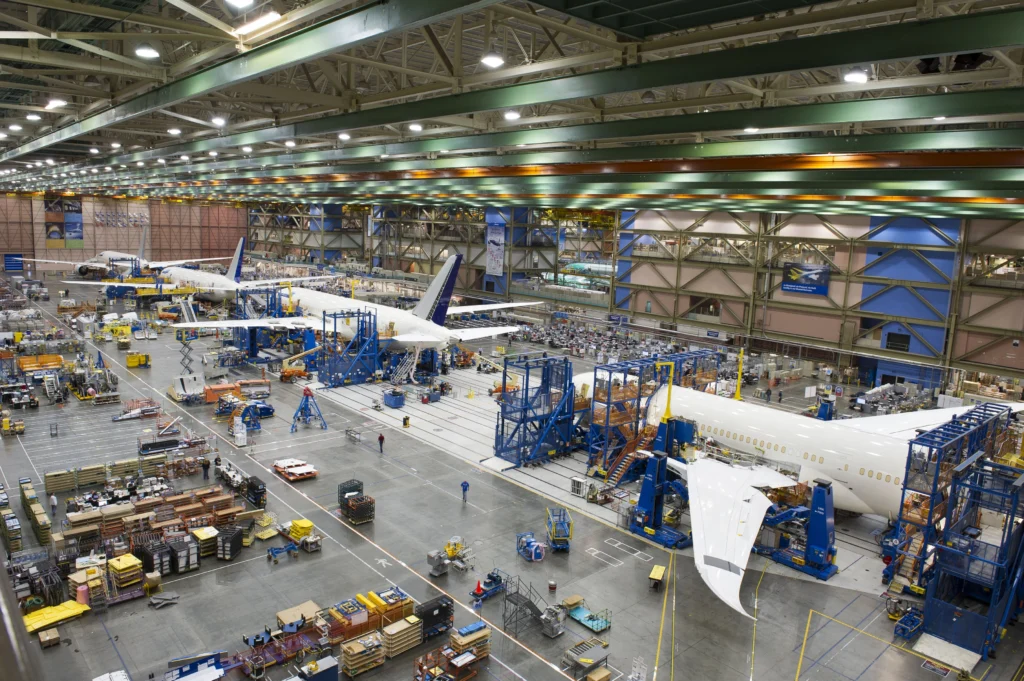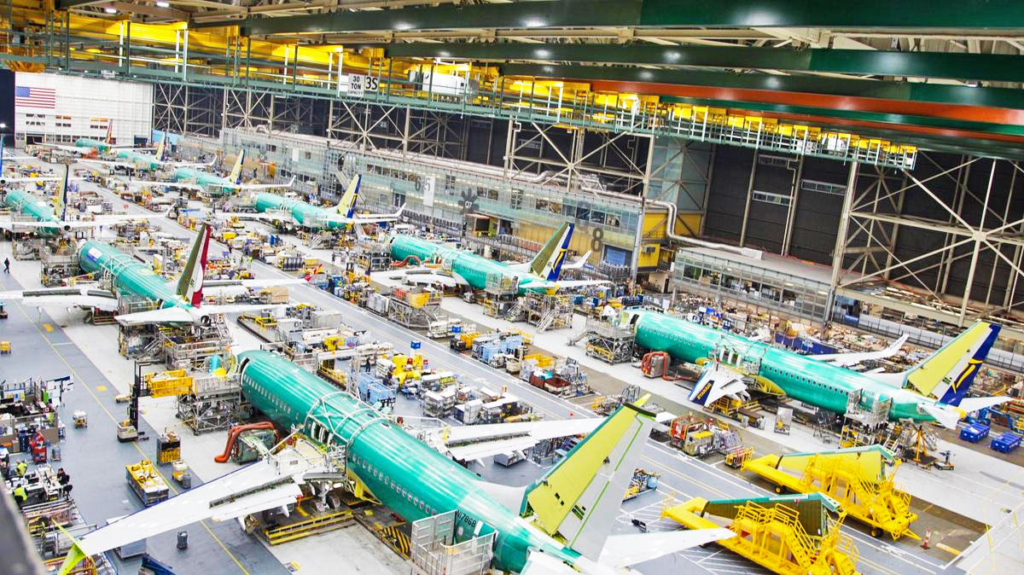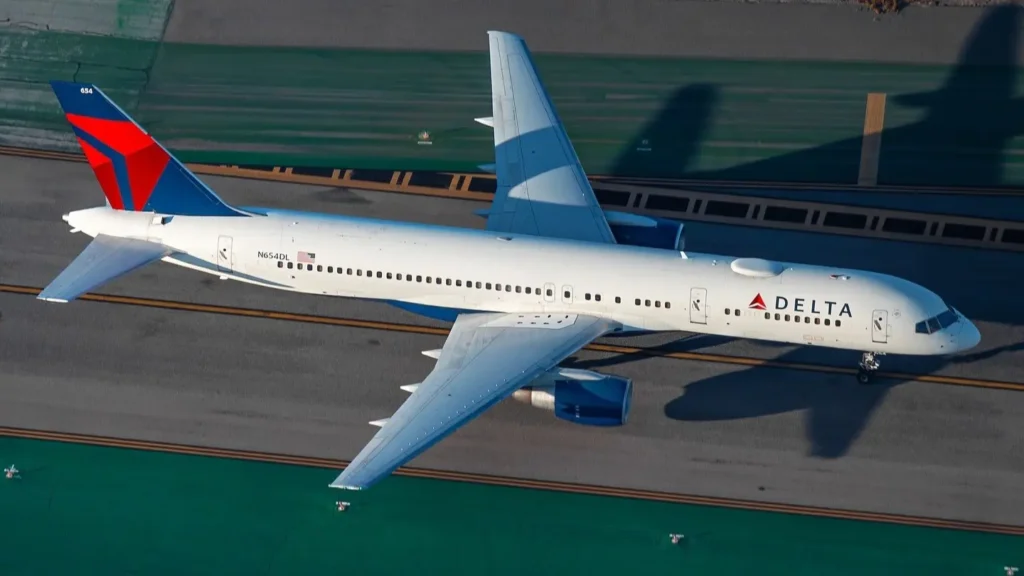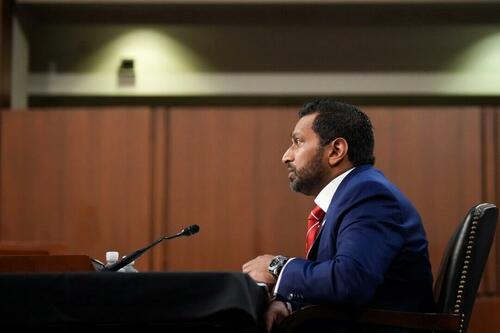
Вашингтон- Федеральное авиационное управление (FAA) заказывает проверку сидений из-за производственного дефекта, затрагивающего самолеты Boeing 787, что вызывает немедленные действия.
Предлагаемое правило предписывает проведение инспекций для устранения потенциальных проблем безопасности, вызванных неисправным оборудованием для сидений.
Проблема возникает из-за неправильных материалов, используемых в производстве сплайс-фиттингов для сидений, что угрожает структурной целостности во время чрезвычайных ситуаций. Заказ FAA затрагивает 37 зарегистрированных в США Boeing 787, охватывающих несколько вариантов.
 Фото: Boeing
Фото: BoeingFAA заказал 787 Seat-Track
15 января FAA опубликовало предлагаемое правило после сообщений от поставщиков, подчеркивающих потенциальные дефекты в сплайс-фургонах Boeing 787. FlightGlobal.
Эти дефекты проистекают из использования неправильных титановых сплавов, в частности, из коммерчески чистого нелегированного титана 1 или 2 степени вместо одобренного FAA титанового сплава 5 степени.
Сплавы 1 и 2 степени не обладают прочностью, усталостной стойкостью и толерантностью к повреждениям, необходимыми для соответствия строгим стандартам авиационной безопасности.
Неисправные фитинги сидений могут выйти из строя при аварийных посадочных нагрузках, что создает риск травмирования пассажиров.
Эта обеспокоенность побудила FAA направить авиакомпании, эксплуатирующие пострадавшие самолеты, для проведения тщательных проверок с использованием передовых методов, таких как рентгеновская флуоресцентная спектрометрия или высокочастотные испытания вихревого тока.
В ответ на этот вопрос Boeing выпустил бюллетень требований к оповещению. 18 октября 2024 года. В бюллетене излагаются протоколы проверки для выявления дефектных сидений и указаны авиакомпании для замены любых несоответствующих компонентов.
Предложенный заказ FAA формализует эти рекомендации, что делает его обязательным для операторов Boeing 787, зарегистрированных в США. Пострадавшие модели включают 787-8, 787-9и 787-10 варианты.
 Фото: Boeing
Фото: Boeing737 MAX 9 Door Plug-инспекция
Boeing пересматривает свое руководство для авиакомпаний по проверке штепселей аварийного выхода из салона для самолетов 737 MAX 9. Федеральное авиационное управление (FAA) должно утвердить эти обновленные процедуры, прежде чем пострадавшие самолеты смогут вернуться в эксплуатацию.
Заземление самолета 737 MAX 9 с этими дверными заглушками было вызвано инцидентом 6 января на рейсе Alaska Airlines (AS).
Неисправность дверной заглушки во время полета создала значительное отверстие в салоне, заставив пилотов безопасно приземлиться в Портленде без серьезных травм пассажиров или экипажа.
В тот же день FAA издало директиву по летной годности, заземляя 171 самолет по всему миру до завершения проверок.
Компания Boeing первоначально предоставила инспекции 8 января, но обратная связь от операторов побудила компанию пересмотреть свое руководство. 9 января FAA подтвердило, что проведет тщательный анализ обновленных процедур после их представления.
Каждый Boeing 737 MAX 9 с заглубленной дверью будет оставаться заземленным до тех пор, пока FAA не определит, что он может безопасно вернуться к работе, - говорится в заявлении агентства.
Несколько перевозчиков, включая Aeromexico (AM), Alaska Airlines (AS), Copa Airlines (CM), Lion Air (JT), Turkish Airlines (TK) и United Airlines (UA), заземлили свои парки 737 MAX 9 в соответствии с директивой.
Генеральный директор Boeing 9 января Дэвид Кэлхун обратился к сотрудникам, взяв на себя полную ответственность за ситуацию и взяв на себя обязательства по полной прозрачности на протяжении всего расследования.
Компания сотрудничает с FAA и Национальным советом по безопасности на транспорте (NTSB), чтобы определить основную причину отказа. «Мы признаем нашу ошибку и будем работать прозрачно на каждом шагу», — заверил Кэлхун.
Эта ситуация подчеркивает важность строгих протоколов безопасности и совместных усилий производителей, регулирующих органов и операторов для обеспечения безопасности полетов.
 Источник: Cado Photo
Источник: Cado PhotoFAA предлагает 737NG и 757
Федеральное управление гражданской авиации (FAA) предложило новые руководящие принципы, требующие от авиакомпаний замены накладных видеомониторов в самолетах Boeing 737NG и 757.
Это действие следует за инцидентом, в котором установленные на пассажирском обслуживающем блоке мониторы отделились от своих рельсов во время жесткой посадки, которая оставалась в рамках требований к аварийной нагрузке.
В предложенном правиле, объявленном 15 января, рассматриваются проблемы безопасности, отмеченные Boeing в бюллетенях специальных требований к вниманию.
Эти бюллетени, выданные операторам 737NG в декабре 2023 года и 757 операторам в январе 2024 года, направляют авиакомпании на замену видеомониторов без вторичных удерживающих кладбищ и безопасных кладбищ на рельсы PSU.
FAA подчеркнула, что отдельные мониторы могут представлять опасность для пассажиров, потенциально вызывая травмы или препятствуя экстренной эвакуации.
В случае окончательной доработки правило будет применяться к 459 зарегистрированным в США 737NG всех вариантов и 85 самолетам 757-200 и 757-300, оснащенным мониторами производства Burrana и Panasonic.
Boeing не предоставил дальнейших комментариев по предложенным мерам. Директива FAA подчеркивает свою приверженность повышению безопасности пассажиров путем устранения рисков, связанных со старением компонентов самолета.
Оставайтесь с нами. Следуйте за нами в социальных сетях для последних обновлений.
Присоединяйтесь к нам в Telegram Group для последних обновлений авиации. Следуйте за нами в Google News
Шины Etihad Boeing 787 сгорели на фоне отказа от взлета в Мельбурне
FAA заказала Boeing 787 Seat-Track Inspection на фоне производственного дефекта, впервые появившегося на Aviation A2Z.











![Sąd: Mieszkanie 191.500 zł. Zachowki 31.916,66 zł i 10.638,88 zł. Obliczenia. Wzory [Przykład]](https://g.infor.pl/p/_files/38265000/podwyzki-38264590.jpg)






